Million dollar reward offered for information on Easey St murders
POLICE are closing in on a 40-year murder mystery using DNA to cut the number of suspects in the infamous Easey St murders to a small field.
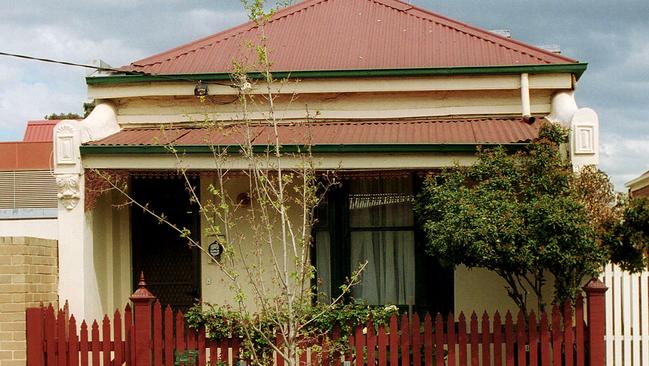
Law & Order
Don't miss out on the headlines from Law & Order. Followed categories will be added to My News.
POLICE are closing in on a 40-year murder mystery using DNA to cut the number of suspects in the infamous Easey St murders to a small field.
Homicide squad detectives will today announce a $1 million reward for information about the cold case murders of Suzanne Armstrong and Susan Bartlett.
Investigators have been methodically eliminating persons of interest for the past two years and are confident of a breakthrough.
Strong DNA evidence is the key to finding the attacker, who without force walked into the Collingwood terrace house on January 10, 1977 and stabbed the women to death.
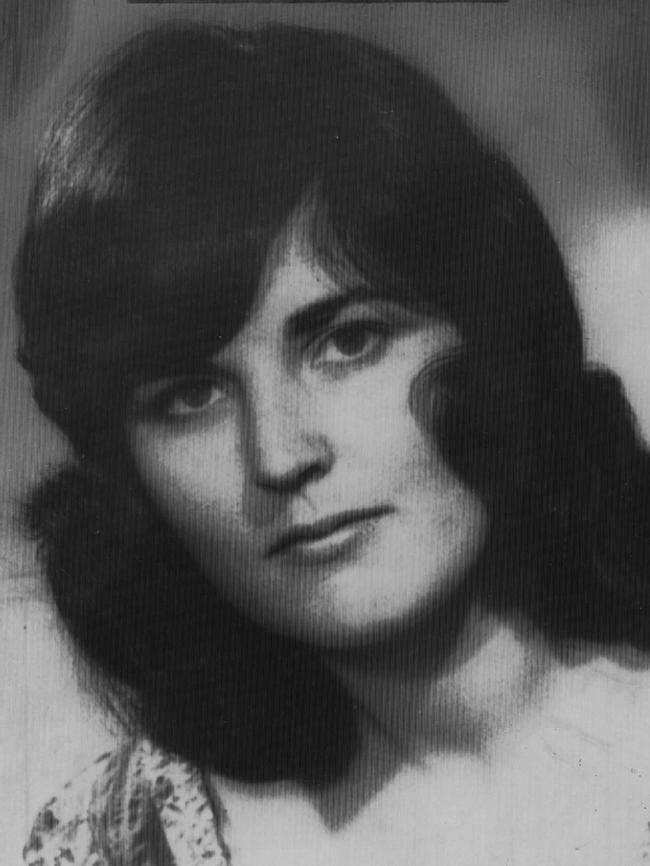
Homicide Squad Detective Inspector Michael Hughes said police had been working through 131 people of interest, of which 41 were now deceased.
He said DNA was vital to catching him and police believed he was among those already named in the case file.
“We have good DNA evidence and we obviously believe that is the key to the investigation,” Det Insp Hughes said.
“We haven’t got a match. If we did I’d be knocking on someone’s door and making an arrest.
“We’ve got to the stage where we have been working through a lot of persons of interest.
“They come from a variety of sources. We’ve narrowed the field considerably.”
The killer was let in or snuck into the women’s home before he sexually assaulted Ms Armstrong, a 27-year-old single mother, and stabbing her in her bedroom.
Art teacher Ms Bartlett is believed to have heard the attack and went to investigate, stabbed to death and left in a pool of blood in the hallway.
Ms Armstrong’s 16-month-old son Greg was not harmed and found by neighbours in his cot three days later.
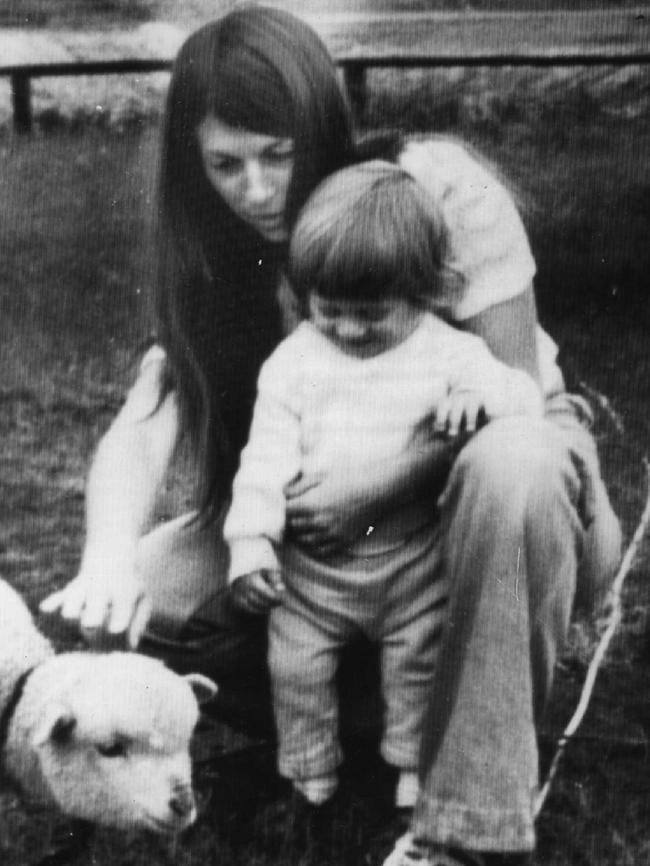
DNA evidence left at the crime scene and advancements in testing have been critical to relaunching the probe. The case was assigned to a new team after a review of cold cases in 2014.
Detectives say it is probable the killer knew at least one of the women and was in the house for “some time”.
Police say Ms Armstrong and Ms Bartlett had a large circle of friends and acquaintances.
Included in that circle was a man a man one of the women had begun to see just weeks earlier.
“(She) met someone just prior to her death. It was early days in the relationship,” Det Insp Hughes said.
“We are also hoping that today’s $1 million announcement will encourage someone out there with crucial information or direct knowledge of these murders to come forward.
“We believe after 40 years someone out there knows something and its time for them to come forward.”
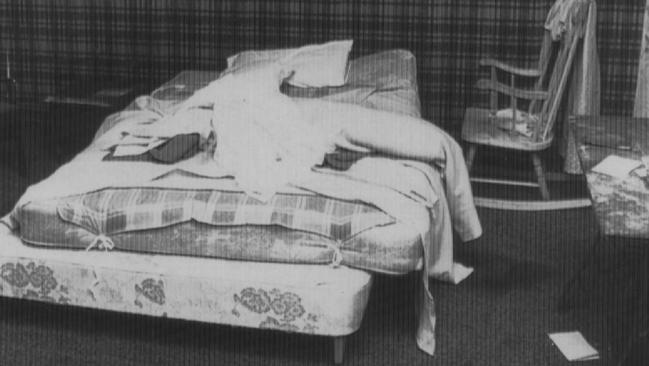
The killer could be aged anywhere between 60 and 80 and it is not known if he is alive or dead.
Det Insp Hughes said the women, who became friends in school as they grew up in country Victoria, had lived in the house just four months before the brutal murder.
Before their bodies were discovered two notes were left at the house.
One was pinned to the front door by neighbours who had found their dog wandering the street.
The other was left in the kitchen by Ms Armstrong’s boyfriend, who entered through the back door of the property with his brother a day after the slayings but did not see the bodies laying near the front of the house.
Both Ms Armstrong and Ms Bartlett were dressed in nightwear and in bed at the time of the initial attack.
Their bedcovers were turned down but a number of lights were on and blinds were drawn when neighbours found the pair on January 13, more than two days after the attacks.
There are a number of knives in police evidence files, including a knife found at nearby Victoria Park railway station, but investigators are not satisfied they have the murder weapon.
————————————————————————————————————————
A killer on the loose
IN January 1977 about half of all Australians watched TV on black and white sets.
And back then murders were not solved by sophisticated technology such as DNA matching.
Detectives had not even heard of DNA profiling when childhood friends from Benalla, Suzanne Armstrong and Susan Bartlett, were murdered in their small rented home in Easey Street, Collingwood, on January 10, 1977.
It is now getting police closer to the identity of their killer.
That man is likely to have been someone the women, both aged in their 20s, knew and may have been under the nose of police ever since the night he went “berserk”.
It is incredulous to think that a man who walked into their home, sexually assaulted single mother Ms Armstrong before stabbing both women to death could go on to live a crime free life.
This killer — described as a maniac- was callous enough to abandon a baby alone in the house — where he would remain unfed for days.
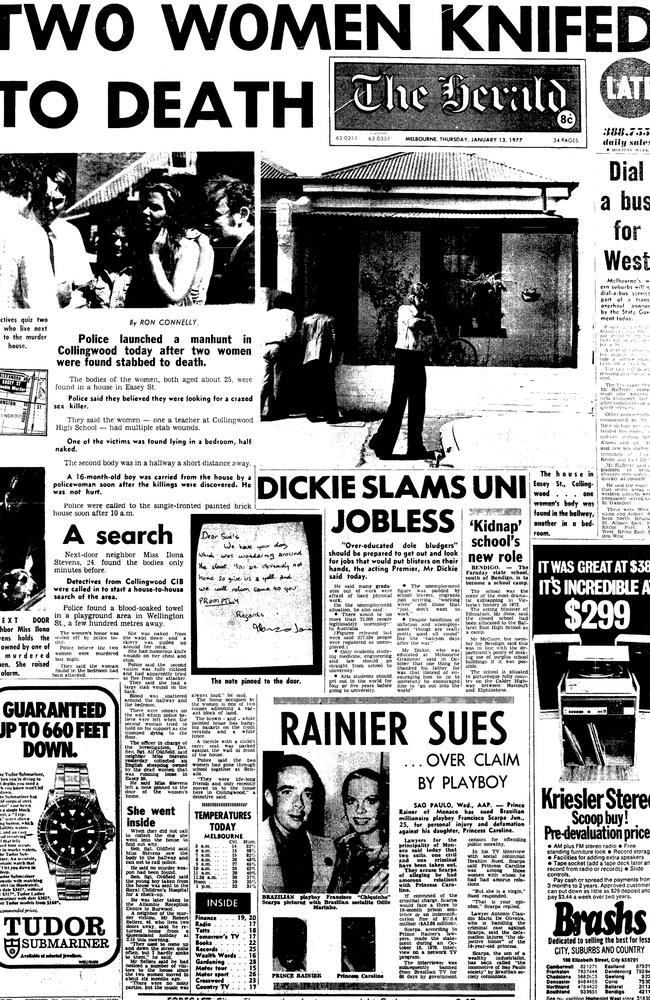
The head of Victoria’s homicide squad, Detective Inspector Michael Hughes, does not believe the killer ever disappeared from view.
While he does not know his identity, or whether it was an impulsive or calculated attack, experience tells him his target has had a life confronting his demons.
And if he’s alive, he has lived for four decades getting away with one of Australia’s most violent murders of all.
“If you look at the brutality of the murders it is likely he has come under police notice again,” Det Insp Hughes said.
“The majority of the persons of interest are alive.
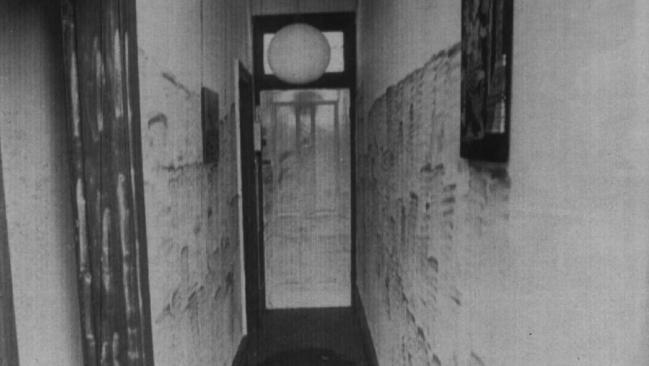
“For these two women, their whole lives were in front of them.
“He’s lived those 40 years.”
Police have run the killer’s DNA through the national criminal investigation database, but have not got a hit.
But most criminals’ DNA is not on it.
Det Inspector Hughes has overseen the narrowing of persons of interest, from 131, to a far smaller field through a process of methodical forensic elimination since the case was relaunched in 2014.
It is a case, he says, which not only devastated two families but also impacted all those who investigated it.
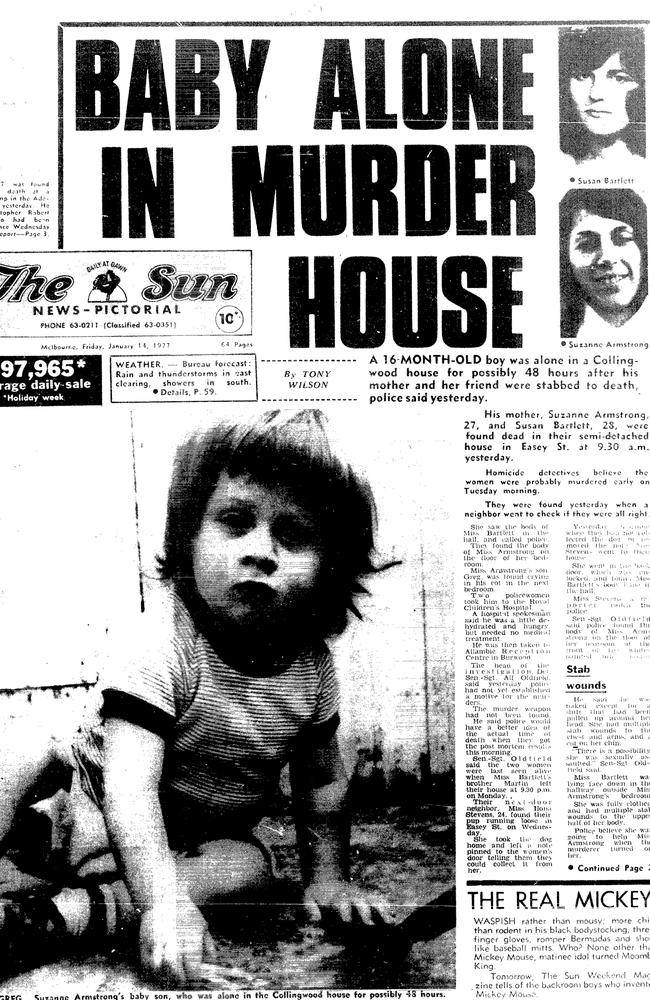
“Every homicide investigator who has worked on this case has been moved by the ferociousness of the attacks and wants it solved,” he said.
The women’s bodies were discovered in pools of their own blood three days after their deaths.
The cries of Ms Armstrong’s 16-month old baby, Gregory, prompted neighbour Ilona Stevens and Janet Powell to investigate.
Ms Stevens could only describe the murder scenes as a nightmare that would haunt her for life.
The then head of the homicide squad, Noel Jubb, described it as “one of the most barbaric and sadistic sex murders in Victorian history.”
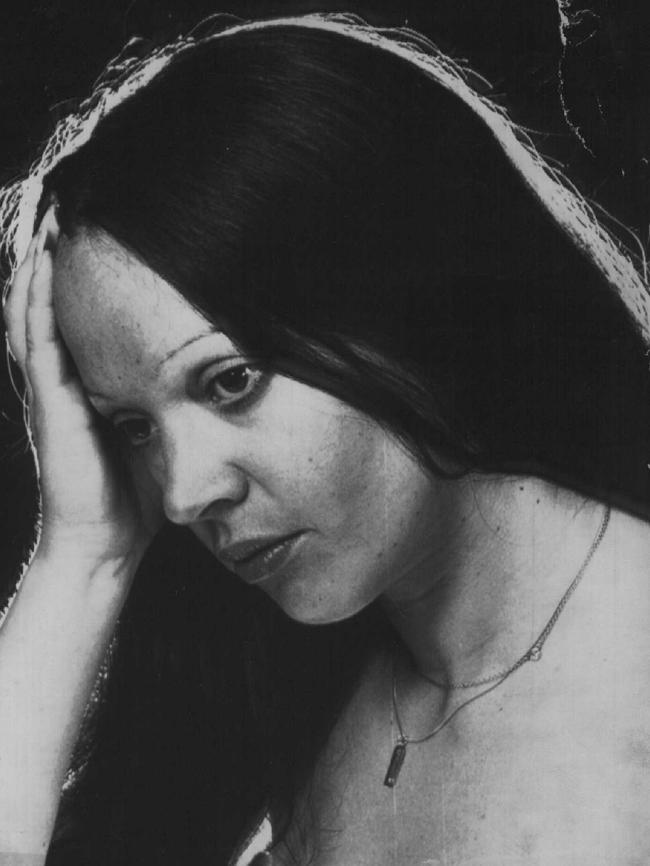
The pair had been stabbed a total 84 times.
In the days after the attack but before the women were discovered by their neighbours, they had found their dog wandering the street and pinned a note to the front door.
Another note was left in the kitchen by Ms Armstrong’s boyfriend the day after the slayings.
He was with his brother when he came looking for her, entering and leaving via the back of the house after he left a message on the kitchen table for his girlfriend to ring him.
They were just six metres from where the bodies lay down the hallway behind a closed door.
Mysteriously, newspaper clippings from The Age newspaper’s January 13 edition were also found in the kitchen.
Investigators believed another person had been in the house in the hours before the neighbours discovered the bodies.
A knife, for years believed to have been used to kill the women, was found near Victoria Park railway station nine days after the murders.
But police are not convinced they are in possession of the murder weapon.
The Easey St murders have been linked to other murders over the years, most significantly the 1982 stabbing of mother of four Rose Ng, but it was never established.
Neither was a link to missing woman Julie Ann Garciacelay, who disappeared from her home in North Melbourne in 1975.
A high-profile sportsman who knew the women is among those who have been investigated and posthumously cleared in recent years.
A Melbourne journalist was also among those scrutinised.
Now time is ticking to catch a killer.
To date, 41 of those on the list of potential suspects has died.
It is hoped a $1 million reward announced today will loosen tongues and a long-awaited DNA strike that unravels the make-up of a murderer.
